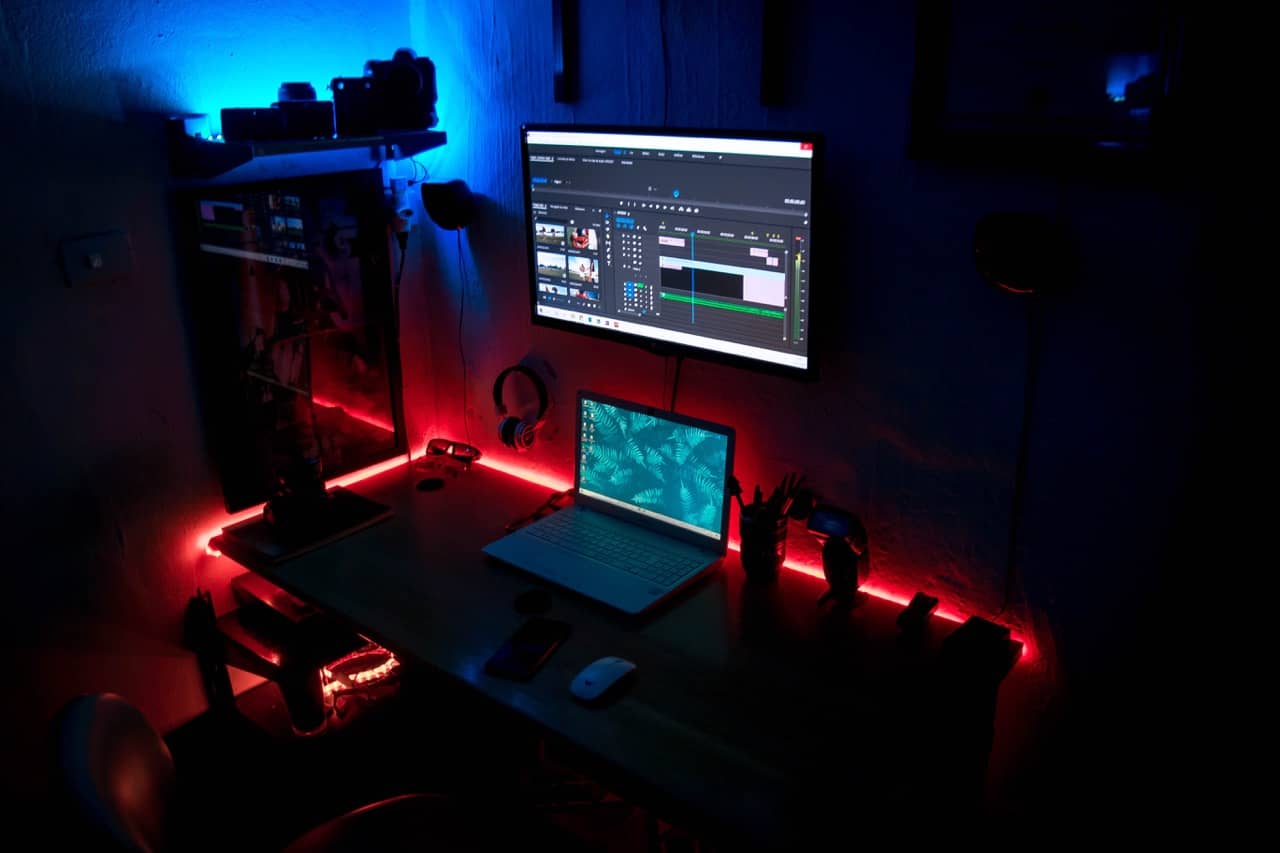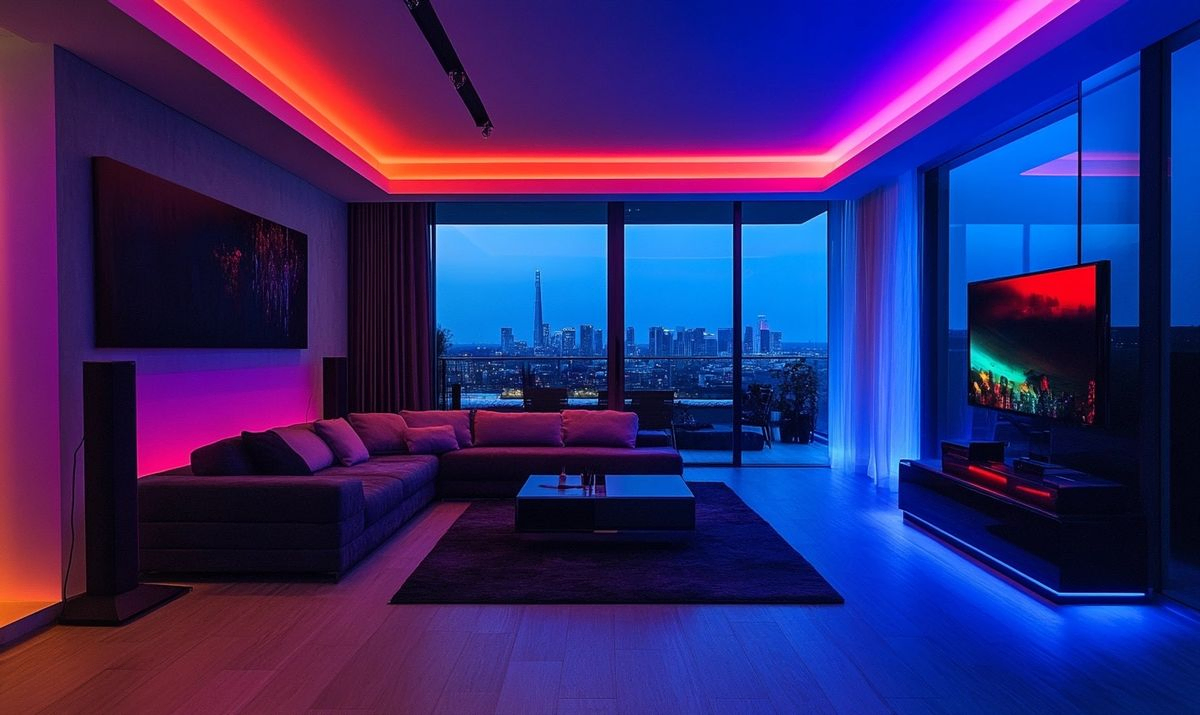Dimmable LED desk lamps have gained immense popularity in recent years due to their versatility and energy efficiency. These innovative lighting solutions provide users with the ability to adjust the brightness levels according to their preferences or specific task requirements. Unlike traditional desk lamps, which often offer only one fixed level of illumination, dimmable LED desk lamps allow for a customizable lighting experience that can significantly enhance productivity and well-being.
Brief Overview of Dimmable LED Desk Lamps
Dimmable LED desk lamps are designed with advanced light-emitting diode (LED) technology, which offers numerous benefits compared to conventional incandescent or fluorescent bulbs. LEDs are semiconductor devices that convert electrical energy into light efficiently, making them highly energy-efficient and cost-effective in the long run.
These lamps utilize an array of tiny LED bulbs that emit bright, focused light while consuming minimal power. In addition to their energy efficiency, dimmable LED desk lamps boast an impressively long lifespan.
This can be attributed to the fact that LEDs do not burn out like traditional bulbs but rather experience a gradual decrease in brightness over time. On average, a well-maintained dimmable LED desk lamp can last up to 25 times longer than incandescent bulbs, thereby reducing replacement costs and minimizing environmental impact.
Proper lighting is essential for both productivity and well-being in any workspace. Dimmable LED desk lamps offer the flexibility needed to create an optimal lighting environment tailored to individual preferences and specific tasks.
Adequate lighting is known to reduce eye strain, headaches, and fatigue caused by poor illumination or excessive glare. Furthermore, having control over the brightness levels allows users to adapt their lighting conditions based on different activities throughout the day – from focused work requiring high intensity illumination to more relaxed reading or ambiance setting where a dimmer, softer glow is desired.
Importance of Proper Lighting for Productivity and Well-being
The impact of lighting on productivity and well-being cannot be overstated. Studies have consistently shown that well-lit work environments enhance concentration levels, cognitive performance, and overall mood. Insufficient lighting can result in decreased alertness, reduced productivity, and even discomfort.
Conversely, excessive brightness or harsh glares can cause eye strain, headaches, and difficulty in maintaining focus. By utilizing dimmable LED desk lamps, individuals can achieve optimal lighting conditions that cater to their specific needs.
The ability to adjust brightness levels ensures that the light output matches the task at hand. For instance, when engaging in detail-oriented work such as reading or writing, higher brightness settings provide clarity and precision.
On the other hand, during relaxation activities like reading a book before bed or creating a calm ambiance in the room, lower brightness levels create a soothing atmosphere conducive to winding down. Additionally, proper lighting plays a vital role in maintaining overall well-being.
Exposure to natural light has been linked to improved mood regulation and increased vitamin D synthesis. While it may not always be possible to have access to natural light sources throughout the day due to various constraints like location or weather conditions, dimmable LED desk lamps offer an effective alternative for replicating natural light patterns indoors.
Understanding the benefits of dimmable LED desk lamps and recognizing the importance of proper lighting for productivity and well-being is crucial for creating an ergonomic workspace. The next sections will delve deeper into how these lamps function and guide you through selecting an ideal dimmable LED desk lamp based on your specific requirements.
Understanding Dimmable LED Desk LampsExplanation of LED technology and its benefits
LED stands for Light Emitting Diode, which is a type of lighting technology that has gained immense popularity in recent years. Compared to traditional incandescent or fluorescent bulbs, LED lights offer numerous advantages.
Firstly, LED lights are highly energy-efficient, consuming significantly less electricity to produce the same amount of light. This translates into substantial cost savings on your energy bills over time.
Additionally, due to their efficient design, LED lights emit minimal heat, reducing the risk of overheating and potential fire hazards. LED lamps also boast an impressive lifespan and durability compared to conventional bulbs.
While traditional incandescent bulbs typically last around 1,000 hours, quality LED lamps can last up to 50,000 hours or more. This extended lifespan eliminates the frequent replacements associated with other types of bulbs and reduces maintenance costs in the long run. Environmentally friendly compared to traditional bulbs
Another significant advantage of dimmable LED desk lamps is their environmental friendliness when compared to traditional lighting options. Unlike incandescent or fluorescent bulbs that contain toxic materials such as mercury or lead, LEDs do not pose any significant threats if accidentally broken. Additionally, LEDs can be recycled easily due to their minimal environmental impact during production and use. Definition and functionality of dimmable LED desk lamps
Dimmable LED desk lamps provide users with the ability to adjust brightness levels according to personal preference or task requirements. This feature allows you to customize the lighting based on your specific needs at any given time. There are various methods by which dimming functionality can be achieved in these lamps.
One common approach is touch control technology incorporated into the lamp’s base or body. With a simple touch, you can adjust the brightness to your desired level.
Some models offer a gradual dimming effect when you touch and hold the lamp, allowing for smoother transitions between different lighting intensities. Another popular method of dimming is through the use of remote control.
This functionality allows users to adjust the lamp’s brightness from a distance, offering convenience and flexibility in various settings. Additionally, many dimmable LED desk lamps are equipped with built-in switches that enable easy adjustment of brightness levels without the need for additional accessories.
Lumens and Brightness Levels: Understanding Light Output Measurements
Debunking the Misconception about Wattage
When it comes to selecting the right dimmable LED desk lamp, understanding light output measurements is crucial. Many people mistakenly rely on wattage as an indicator of a bulb’s brightness. However, with LED technology, wattage is not the most accurate measure of brightness.
Instead, lumens take center stage in determining the intensity of light emitted by a bulb. Watts merely indicate energy consumption.
Lumens offer a more precise indication of how bright a light source will be. For example, a traditional 60-watt incandescent bulb produces around 800 lumens.
But an energy-efficient dimmable LED desk lamp consuming only 10 watts can emit the same amount of light or even more. This fundamental shift in understanding allows users to choose lamps based on their desired brightness rather than relying on outdated wattage measurements.
Recommended Lumens for Different Tasks (Reading, Studying, Working)
The appropriate lumen level for your dimmable LED desk lamp depends on the specific task at hand. For reading purposes, experts recommend selecting lamps that provide around 450-700 lumens to ensure sufficient illumination without causing eye strain or fatigue. If your primary focus is studying or working, aim for slightly higher lumen ranges between 600-1000 lumens to promote concentration and productivity.
Keep in mind that personal preferences may vary; some individuals may prefer brighter lighting while others might find it overwhelming. It’s essential to strike a balance between ambient lighting and task-specific luminosity.
Color Temperature: Exploring the Impact of Different Color Temperatures on Productivity and Ambiance
Warm White vs Cool White Light: Pros and Cons
Color temperature refers to the perceived warmth or coolness of light emitted by a bulb. It is measured in Kelvin (K), with lower values indicating warmer, yellowish light and higher values representing cooler, bluish light. Understanding the impact of different color temperatures can help you create the desired ambiance and enhance productivity.
Warm white light (around 2700-3000K) mimics the cozy glow of incandescent bulbs. It creates a calming atmosphere, making it ideal for relaxation or creating a warm environment in living spaces.
However, it may not provide sufficient brightness for tasks that require focus and attention to detail. On the other hand, cool white light (around 4000-5000K) provides a brighter, more energetic ambiance akin to natural daylight.
This temperature range enhances concentration and alertness, making it perfect for studying or working on intricate tasks that demand visual precision. However, some individuals may find cool white light too harsh for relaxation or winding down at the end of the day.
Selecting the Ideal Color Temperature based on Personal Preferences
Choosing between warm white and cool white light ultimately comes down to personal preferences and specific requirements. Evaluate your needs carefully before making a decision. If your aim is to create an inviting atmosphere while still maintaining ample brightness for work-related activities, you may opt for a lamp with adjustable color temperature settings.
Some dimmable LED desk lamps offer a wide range of color temperature options, allowing you to customize lighting according to your mood or task requirements. This flexibility ensures that you can enjoy both warm and cool tones whenever needed by adjusting your lamp’s color temperature settings.
Adjustable Features: Examining Additional Functionalities beyond Dimming
Flexible Necks or Arms for Directing Light Where Needed
A valuable feature in dimmable LED desk lamps is their ability to provide focused lighting precisely where it is needed most. Lamps with flexible necks or arms allow you to easily direct the light beam, ensuring optimal illumination on your reading material, workspace, or any specific area of interest. This flexibility enhances comfort and reduces eye strain by minimizing shadows and glare.
Color-changing Options for Mood Enhancement
For those seeking a touch of creativity and mood enhancement, some dimmable LED desk lamps offer color-changing options. These lamps enable you to choose from a spectrum of colors to create a captivating ambiance that suits your mood or environment.
Whether you want soft pastels for a soothing atmosphere or vibrant hues for a lively work setting, these color-changing features bring an element of visual delight and versatility to your workspace. By considering adjustable features beyond dimming functionality, you can enhance both the practicality and aesthetic appeal of your dimmable LED desk lamp, ensuring a truly customized lighting experience.
Setting Up Your Dimmable LED Desk Lamp
Avoiding Glare: Positioning the Lamp Correctly in Relation to Your Workspace
Proper placement of your dimmable LED desk lamp is crucial for optimizing its effectiveness and avoiding glare. Position the lamp in a way that directs the light onto your workspace without causing discomfort or obstructing your line of sight.
Avoid placing the lamp directly in front of you or behind your computer screen, as this can create unwanted reflections or shadows. Instead, position it slightly off to the side, at an angle that illuminates your work area evenly and minimizes glare on your screen.
Consider using a desk lamp with an adjustable arm or flexible neck, allowing you to easily maneuver and redirect the light as needed. Experiment with different angles and heights until you find the optimal position that provides adequate lighting without causing any distractions or discomfort.
Minimizing Eye Strain: Ensuring Adequate Illumination Without Creating Shadows
To minimize eye strain while using a dimmable LED desk lamp, it’s important to ensure that you have sufficient illumination without creating harsh shadows. Inadequate lighting can strain your eyes and make it difficult to focus on tasks for extended periods. Position your desk lamp in a way that evenly illuminates your workspace, ensuring there are no dark areas that could cause unnecessary strain on your eyes.
Adjust the brightness level according to your preference, taking into account both task requirements and ambient lighting conditions in the room. Avoid excessively bright settings that may cause discomfort or create stark contrasts.
If possible, consider using multiple light sources in combination with your dimmable LED desk lamp to further reduce shadows and provide balanced illumination across your entire workspace. This can help prevent eye fatigue during long hours of work.
Conclusion
Setting up and utilizing a dimmable LED desk lamp can significantly enhance your productivity and well-being. By understanding the proper placement considerations, such as avoiding glare and minimizing eye strain, you can optimize the benefits of this versatile lighting solution.
Remember to position your lamp correctly in relation to your workspace, directing the light at an angle that provides adequate illumination without causing discomfort or obstructing your line of sight. Utilize adjustable features and experiment with different angles until you find the optimal position.
Additionally, ensure that your workspace is evenly illuminated, avoiding shadows that could strain your eyes. With a well-placed and properly adjusted dimmable LED desk lamp, you can create an optimal lighting environment for work or study.
This will not only improve focus and productivity but also contribute to a more visually comfortable experience throughout the day. Embrace this innovative lighting technology to illuminate your work with brilliance, efficiency, and style while taking care of your visual health.







